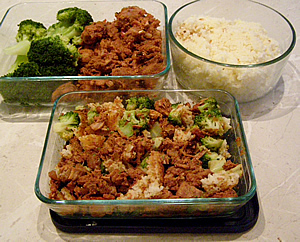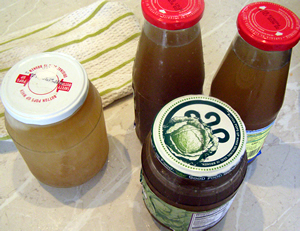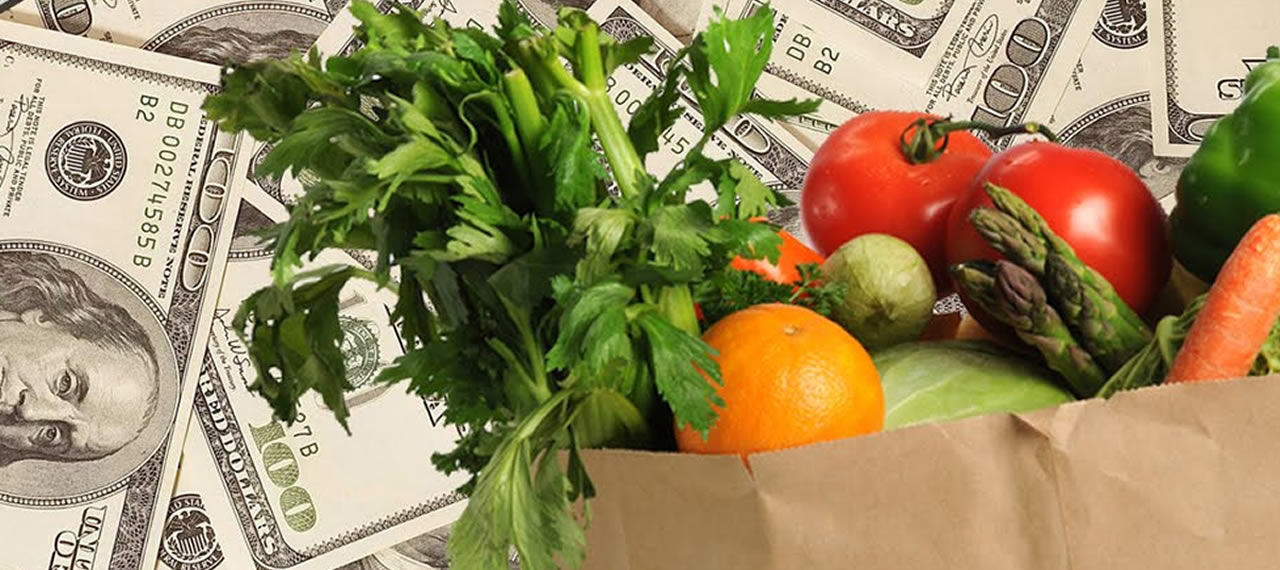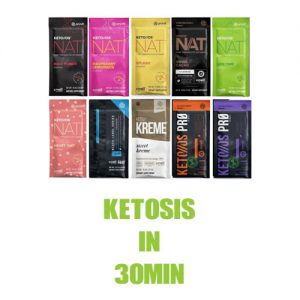One of the most common reasons given for not eating quality food is the cost. We have become so accustomed to dirt cheap food, we have forgotten the true value of it. Then, as more and more of us demand better food, we are offered healthier options with very high price-tags. The result is that it seems our only two choices are cheap, chemical-laden foods OR expensive, organic foods. However, we must remember that many of our ancestors had very little money, yet ate very high quality food. So, let’s look to our roots and re-learn how to eat well on a budget.
Buying Food
1/ Buy whole foods instead of packaged or pre-cut food
Whole fruits, vegetables, fish, chicken and cuts of meat are much more affordable than packaged food, as you are not paying for the packaging and marketing of the product. Resist the urge to buy pre-mixed salad, pre-cut fruit, and perfectly cut mini carrots. Animal foods are also much cheaper bought whole (see #11).
2/ Avoid superfoods and health-industry foods
Some of the most expensive “health food” you can buy are products with health-industry labels such as gluten-free, low-carb, organic, and superfood. Learn here how to decipher the marketing and Eat Healthy by Ignoring Health Food Labels. Also, remember The Only Superfoods You’ll Ever Need are not in that expensive health food shop.
3/ Buy chemical-free/spray free produce that is NOT certified organic
The process of certifying a farm to be organic is very costly for farmers, so they must pass that cost onto the consumer. Fortunately, all you really want is fruit and vegetables that have been grown in an organic manner, and you can find plenty of this at your local farmers market. Which brings us to…
4/ Shop at farmers markets
Local markets have very affordable food because you are rarely paying for a middle man or long-distance transport. These markets are not a guarantee of organically grown/raised food, but there is lots of it there. So get talking, ask about growing methods, and find the local farmer who sells chemical-free food at very affordable prices, like this inspiring elderly city farmer.
5/ Become a member of a co-op
This is another way to get cheap food and be part of a health-conscious community. Google co-op and your city name to find a co-op near you.
6/ Only buy produce that is in season
A lot of work and money goes into delivering produce to consumers out of season. Food is stored for months, transported great distances, and sprayed with ripening and waxing agents. On the contrary, when a fruit or vegetable is in season, it can be harvested in abundance, providing a huge supply at lower costs. Farmers markets and my veggie cheat sheet can help you learn which season to buy what. It’s so nice to look forward to different foods with the changing weather.
7/ Start with the Dirty Dozen and Clean 15
If you shop at a supermarket, where certified organic produce is most expensive, focus on the Dirty Dozen and Clean 15. Then you can still greatly reduce your chemical intake, even if you can’t buy all chemical-free food yet. Keep in mind this chart is U.S. based, so may vary in your country.
8/ Grow your own
Imagine never having to buy carrots, tomatoes or parsley again. Just go out to your garden and pick them! More and more information and resources are available for learning to grown your own food, even in small spaces. Weed em and reap!

Packing leftovers and some rice to take for lunch.
9/ Find a good butcher
Ask around, check our your nearest industrial area, and find a large-scale butcher with pasture-fed, free-roaming meats. As with produce, you don’t need the organic certification if you’ve gotten to know your rancher or butcher, and know where your meat is coming from and how it was raised. If they butcher meat on a large-scale, they will be very knowledgeable, have a wide variety of animals and cuts, and will be very inexpensive.
10/ Buy cheap cuts of meat
People are so used to lean, boneless, fileted, quick-cook cuts of meat, that the rest of the cuts have lower demand and MUCH lower prices. Try lamb neck or forequarter chops, chicken wings and legs, beef brisket or cheeks. The cheap cuts are often the tastiest, and easy to throw into the slow-cooker, oven or grill. Don’t forget the highly nutritious organ meats, and to ask the butcher for meat scraps and bones (often free) for your bone broth and soups.
11/ Buy the whole animal
Just like pre-cut fruit and vegetables, you pay extra to have someone pre-cut your meats for you. Instead, buy the whole chicken and use the carcass for broth. A whole fish is usually insanely cheaper than fillets, and the fishmonger will often fillet it for you for free anyway. Again, save the fish carcass for fish broth/stock! A whole cow, pig or lamb may be slightly big for your fridge/freezer, but if you get a handful of friends together, you can do a meat-share from a wholesale butcher or farmer. At the least, buy the whole beef rump, and ask the butcher to cut into steaks for you.
Preparing Food
12/ Plan your meals
Planning ensures you get your meat out of the freezer to defrost, your dinner in the slow-cooker before you leave for work, your leftovers packed for lunch. And all that will prevent you from buying expensive take-away food and throwing away unused food that you forgot to eat.
13/ Bring your lunch and snacks with you
This is part of planning, but doesn’t have to take much time or fore-thought and saves tons of money spent on restaurant and cafe food. After dinner, simply throw the leftovers into a container for breakfast and/or lunch the next day. Then in the morning, just add to your bag some snacks like: a piece of fruit, a whole carrot, a handful of nuts, half an avocado with a little spoon, a couple cold chicken wings or sausages. Become a pro at Lovin’ Leftovers.

Made from a chicken carcass and some veggie scraps, homemade broth is virtually free.
14/ Make your own basics from scratch
Not only are homemade broth, yoghurt, dressings, sauces, sauerkraut, and nut butters/flours much healthier, but they are also incredibly cheaper and easy to make. Here are some recipes to get you started.
15/ Eat soaked whole grains if they work for you
Whole grains such as rice, millet and oats are a very cheap food staple that can be moderately enjoyed if grains work well for your metabolic type. Just ensure you always soak grains before cooking.
Lastly, whatever your budget, it may be wise to reassess what you are spending your money on, and reconsider if food deserves a healthy portion of your budget. Remember that nutrient-rich, chemical free food is essential to your life; nice clothes, gadgets, big cars, alcohol, home-furnishings and resort holidays are not. Doing without some material goods doesn’t have to hinder your happiness, but poor health surely will. However much money you have to live on, find a way to eat well.
What are some ways that you save money on food? Do you feel like you can afford the kind of food you want to be eating?
15 Ways to Eat Healthy on a Budget – February 2013








